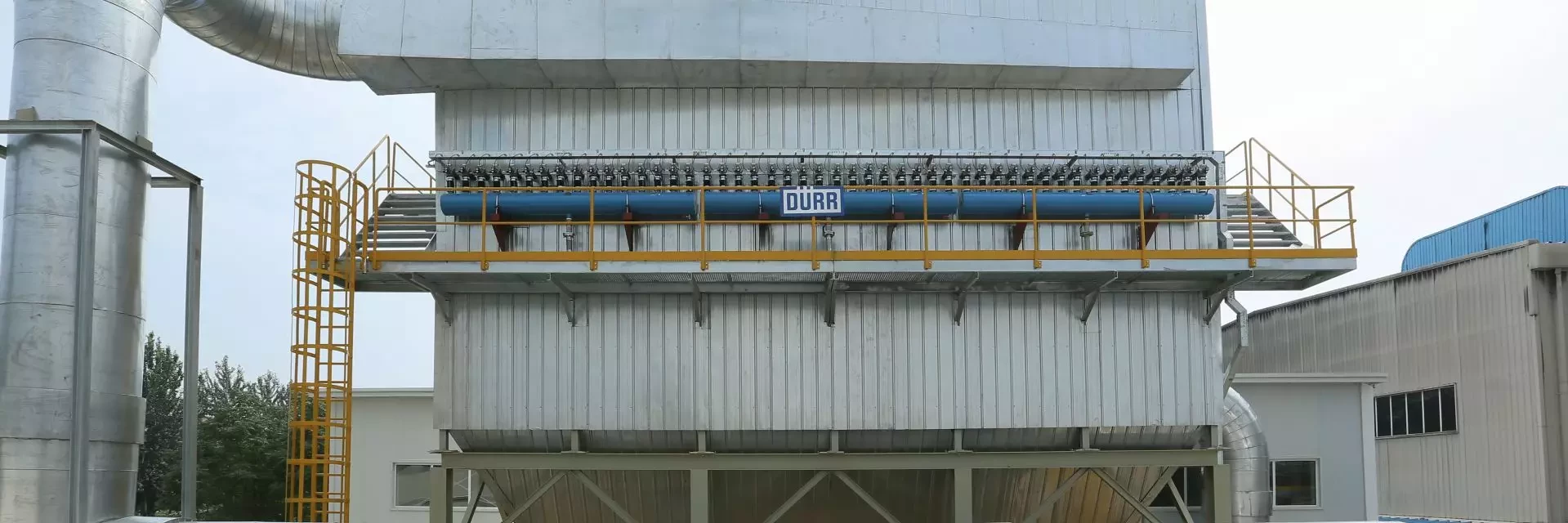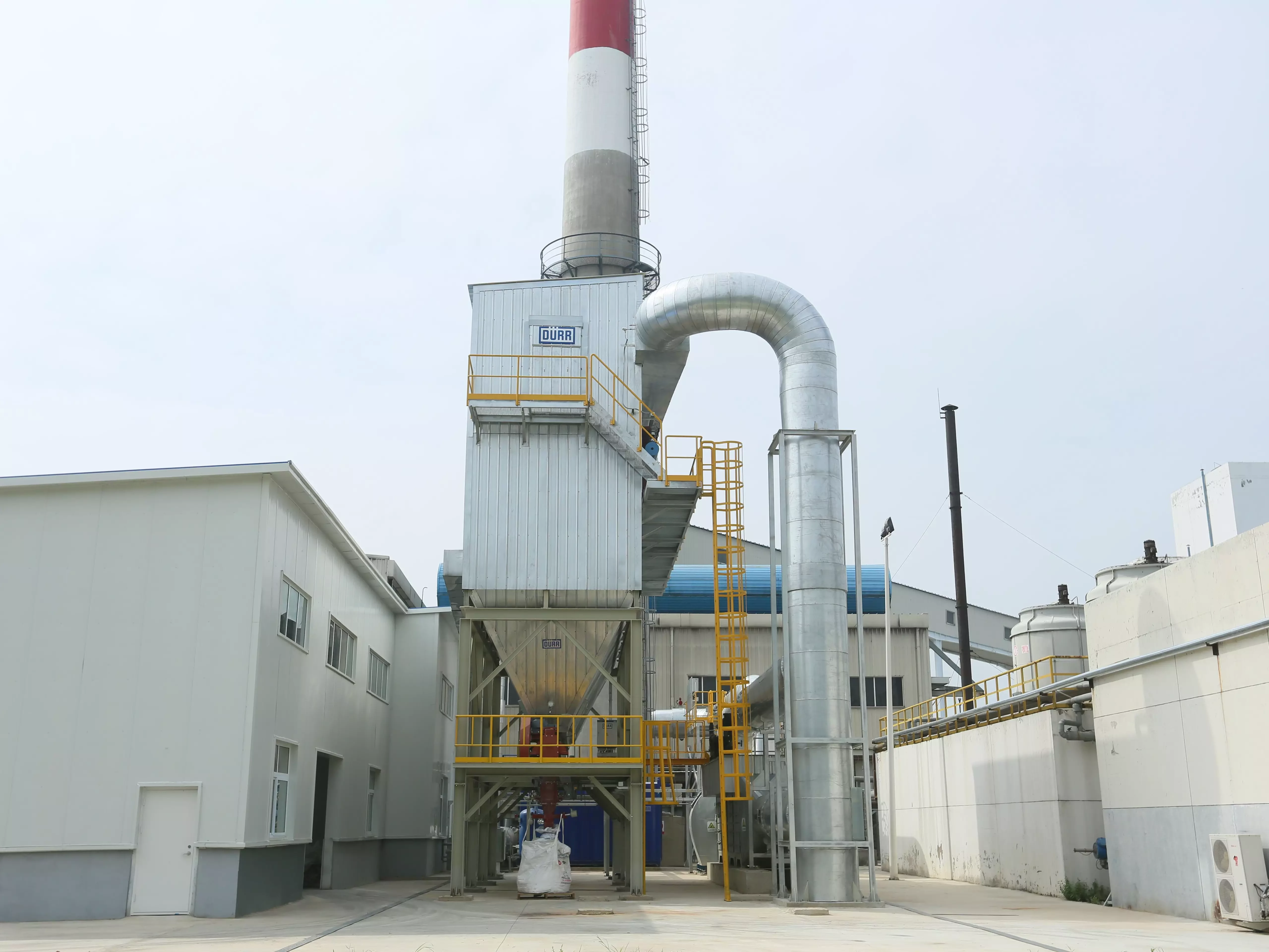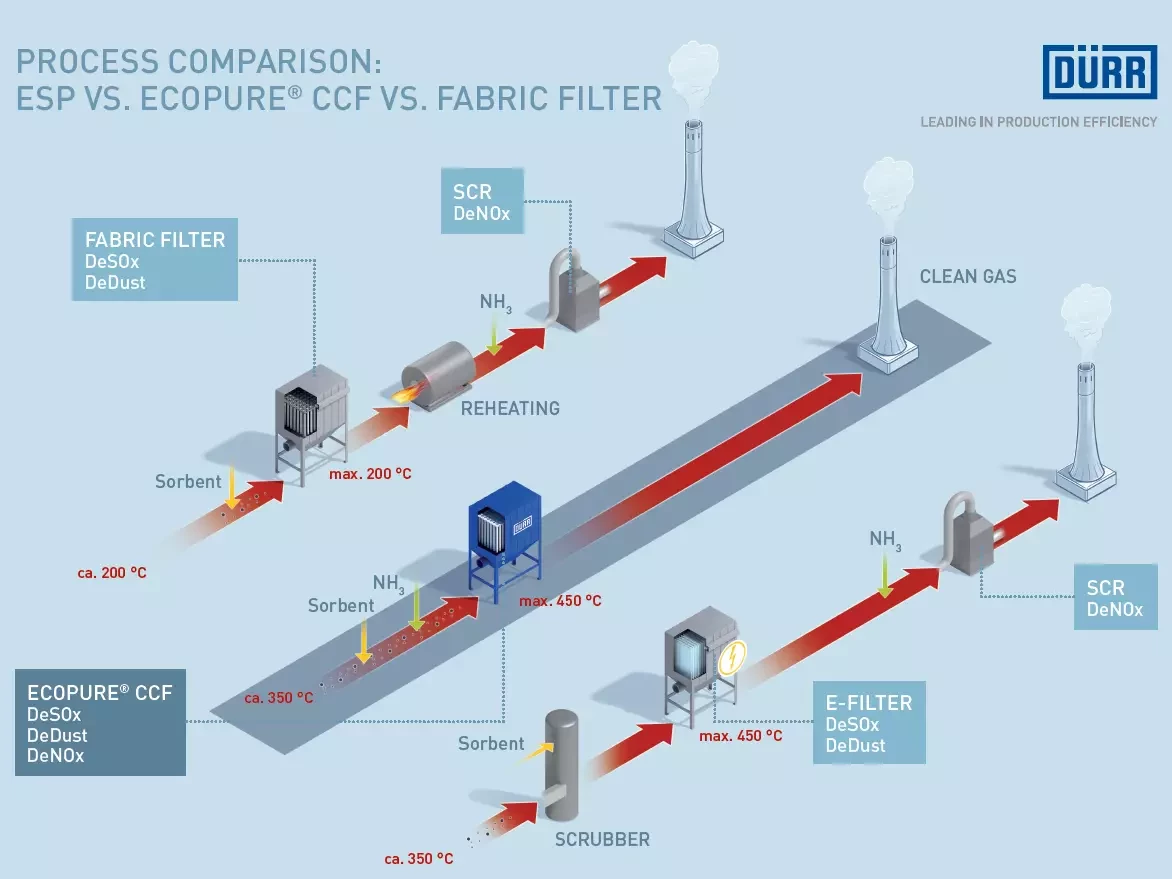Imposed production cuts due to reduced emission limits as shown in Table 1 mean limited throughput and a corresponding lower production volume. A complete production shutdown has an even more severe impact because the furnace has to be kept at a specific operating temperature at all times and the molten glass must be kept moving. Libbey aimed for preventing these negative impacts and subsequently installed a high performance exhaust gas purification technology from Dürr, ensuring reliable compliance with the current emission limits (Figure 1). Additionally, they were interested in having the potential to handle tightened emission limits in the event of smog alerts as shown in Table 1 or even allowing for continuous operation without production cuts.
50% below current emission limits
When it came to planning a system the experts from Dürr started by analyzing the conventional technology, which consisted of an electrostatic filter and downstream catalytic denitrification using a SCR catalytic converter. An electrostatic filter (ESP) satisfies the current limits but does not provide any margin for future, tighter limits of harmful particulate matter. As an alternative, Dürr examined the use of fabric filters combined with a downstream SCR exhaust air purification system. This method would meet current limits, however proved being uneconomical due to low optimal operating temperature. Since the operation of fabric filters is limited in temperature, the process requires a cooling of the raw gas. Due to the fact that the downstream SCR process requires a higher operating temperature than the exit temperature of the fabric filter, this process requires a costly reheat of the exhaust gas. This process type was rejected, as it would be too expensive.
The best solution for the conditions in glass production proved to be Dürr’s newly developed Ecopure® CCF technology. It achieves clean gas values that exceed the current limits by 50%, providing the margin for tighter emission values in the future, while presently avoiding any production cuts during level 1 smog alert periods. All three processes are shown in Figure 2.
“Since we put the Ecopure® CCF system into operation a year ago, there have been smog alerts on 143 days. The biggest benefit obtained by operating this system is that even though we are located in such an environmentally restricted area, we have not been asked for any production cuts since the CCF system was installed. All the design targets (NOx, SO2, particulates, and ammonia slip) have been reliably achieved and the system still has the ability to reach a little higher DeNOx and DeSO2 standards. The local government is totally satisfied with the results of this project. With the Ecopure® CCF we gained a higher production availability in our Langfang plant last year compared to a furnace without the Ecopure® CCF”, explains Weijen Chen, Batch and Furnace Engineer at Libbey.
Simultaneous filtering of several pollutants
Ecopure® CCF’s 3-in-1 process is based on filtering three pollutants – dust, sulfur, and nitrogen oxides – from the exhaust air using just one system. The performances for different pollutants with a standard Ecopure® CCF system are shown in Table 2. This is made possible by the catalytically coated filter candles with ceramic fibers that can withstand temperatures of up to 900°C.
Compared with fabric filters, the coated filter candles have a much thicker filter wall which does not deform during the back pulse cleaning process from the compressed air. This minimizes wear and increases the service life. The rigidity also helps to maintain a permanent filter cake on the surface, which increases the filtration performance and ultimately reduces clean gas values of PM2.5. The filter candles are coated with the same catalyst material that is used for selective catalytic reduction (SCR) for maximum performance in reduction of nitrogen oxides. While the catalyst is located inside the filter wall, it is well protected from deterioration by dust, as it is not exposed to clogging and masking like conventional ceramic honeycomb catalyst.
The Ecopure® CCF technology also has economic benefits when it comes to desulfurization. The applied dry technology uses sorbent injection, like hydrated lime, for SOx emission reduction, managing less sorbent consumption in comparison to electrostatic filtration and thereby reducing operational cost. A comparison of the electrostatic filter (ESP), fabric filter, and the Ecopure® CCF is shown in Table 3.
Maintenance on the fly
The Ecopure® CCF integrates three individual exhaust air purification processes into one system. As a result, it can be compact, and the service cost is reduced. The modular design of the filters allows for maintenance work during continued operation of the system because each filter module can be individually isolated while the exhaust air is redirected through the other modules. Unlike with conventional systems, operation of the glass smelting furnace is not affected by planned operational cases of the Ecopure® CCF system, such as maintenance work, thus creating additional benefit from undisturbed production.
Expectations far exceeded
“We decided to choose Dürr’s Ecopure® CCF amongst other technologies due to reliability, a small footprint, ease of operation, and low maintenance, as well as the low temperature drop over the system. With the installed system, we are fully satisfied. Dürr managed the project in a very professional way in the small timeframe given. After the start of operation, Dürr also supported us by optimizing the system to the highly variable operational conditions of our glass furnace. Since start-up we have had no system shut downs - neither by the local authorities due to smog alerts, nor for maintenance”, summarizes Weijen Chen, Batch and Furnace Engineer at Libbey.
On the other site Houver Chabo, Product Manager from Dürr mentions the good cooperation with the local Libbey team: “During the optimization and operation of the Ecopure® CCF system we experienced great support from Libbey. The operational excellence of the Libbey Langfang team contributed to the success of this project.”



